We use information collected through cookies and similar technologies to improve your experience on our site, analyze how you use it and for marketing purposes.
Your privacy settings
We and our partners use information collected through cookies and similar technologies to improve your experience on our site, analyze how you use it and for marketing purposes. Because we respect your right to privacy, you can choose not to allow some types of cookies. However, blocking some types of cookies may impact your experience of the site and the services we are able to offer. In some cases, data obtained from cookies is shared with third parties for analytics or marketing reasons. You can exercise your right to opt-out of that sharing at any time by disabling cookies.
Manage Consent Preferences
Necessary
Always ON
These cookies and scripts are necessary for the website to function and cannot be switched off. They are usually only set in response to actions made by you which amount to a request for services, such as setting your privacy preferences, logging in or filling in forms. You can set your browser to block oralert you about these cookies, but some parts of the site will not then work. These cookies do not store any personally identifiable information.
Analytics
These cookies and scripts allow us to count visits and traffic sources, so we can measure and improve the performance of our site. They help us know which pages are the most and least popular and see how visitors move around the site. All information these cookies collect is aggregated and therefore anonymous. If you do not allow these cookies and scripts, we will not know when you have visited our site.
Embedded Videos
These cookies and scripts may be set through our site by external video hosting services likeYouTube or Vimeo. They may be used to deliver video content on our website. It's possible for the video provider to build a profile of your interests and show you relevant adverts on this or other websites. They do not directly store personal information, but are based on uniquely identifying your browser and internet device. If you do not allow these cookies or scripts it is possible that embedded video will not function as expected.
Google Fonts
Google Fonts is a font embedding service library. Google Fonts are stored on Google's CDN. The Google Fonts API is designed to limit the collection, storage, and use of end-user data to only what is needed to serve fonts efficiently. Use of Google Fonts API is unauthenticated. No cookies are sent by website visitors to the Google Fonts API. Requests to the Google Fonts API are made to resource-specific domains, such as fonts.googleapis.com or fonts.gstatic.com. This means your font requests are separate from and don't contain any credentials you send to google.com while using other Google services that are authenticated, such as Gmail.
Marketing
These cookies and scripts may be set through our site by our advertising partners. They may be used by those companies to build a profile of your interests and show you relevant adverts on other sites. They do not store directly personal information, but are based on uniquely identifying your browser and internet device. If you do not allow these cookies and scripts, you will experience less targeted advertising.
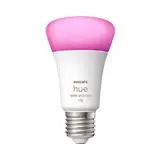
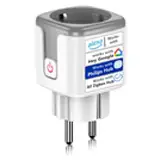
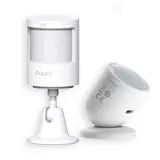
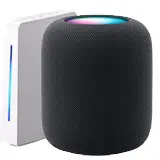
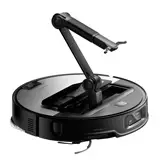

How to set up food and water alerts for your pets
Worried about forgetting to feed or water your pet? You're not alone! Modern life is busy, and sometimes even the most important tasks slip our minds. But don't worry, we have the solution! In this article, we'll guide you step-by-step on setting up food and water alerts for your pets, ensuring they're always well-fed and hydrated.
Why do you need food and water alerts for your pets?
You might think, "I'd never forget to feed my furry friend." But what happens when you have a particularly stressful day at work? Or when you're traveling and a friend or family member is looking after your pet? Alerts are a lifesaver in unexpected situations. They're a simple way to ensure your pet's health and well-being, no matter the circumstances.
Food and water alert settings
There are several ways to schedule reminders to feed and hydrate your pet. From simple, free options to more advanced technological solutions, there's something for every lifestyle and budget!
Manual alerts: the classic calendar and sticky notes
The most basic, and often the cheapest, option. Don't underestimate the power of simplicity!
While simple, these options require discipline and constant attention to prevent them from becoming just more decoration.
Digital Alerts: Technology at your service
This is where technology comes in to simplify your life. Take advantage of the tools you already have at your fingertips.
Smart Devices: Automation to the Rescue
For those seeking maximum comfort and automation, smart feeders and waterers are an excellent investment.
These devices typically connect to your Wi-Fi network and are controlled via an app on your phone. While more expensive than the previous options, they offer great convenience and peace of mind.
Setting up alerts on your phone: a step-by-step guide
Let's see how to set up alerts in the most common tools: phone alarms and Google Calendar.
Setting alarms on your phone (Android and iOS)
Setting up recurring events in Google Calendar
Tips for choosing the best option for you
The best option for setting up food and water alerts for your pet will depend on your needs and personal preferences. Here are some factors to consider:
Don't be afraid to try different options until you find the one that best suits your needs. The important thing is to find a system that works for you and helps ensure your pet's well-being.
Best Practices for Successful Alerts
Setting up alerts is only the first step. To make sure they actually work, follow these best practices:
Practical examples of meal schedules and alerts
To give you a clearer idea, here are some examples of meal times and alerts you can adapt to your needs:
The importance of hydration and water alerts
Don't forget the importance of fresh water. Dehydration can be dangerous for pets. Make sure they always have access to clean, fresh water.
Water alerts are just as important as food alerts. Schedule reminders to change your pet's water at least once a day, or even more often if it's hot. Consider using an automatic waterer to keep the water fresh and clean longer.
Conclusion: Prioritize your pet's well-being with smart alerts
Setting up food and water alerts for your pets is a simple yet effective way to ensure their well-being. Whether you choose the simplicity of a physical calendar or the convenience of a smart feeder, the important thing is to find a system that works for you and helps you remember your furry friend's basic needs. Don't wait any longer! Start implementing these strategies today and enjoy the peace of mind knowing your pet is well cared for.
What method do you use to remember to feed your pet? Share your tips in the comments and help other pet owners keep their animals happy and healthy! And if you liked this article, share it with your animal-loving friends!
Related Posts
Can voice assistants help with pet care?
Can you imagine your voice assistant helping you take care of your pet? It sounds like science fiction, but technology is advancing by leaps and bounds. They are no longer just for playing music or reminding you of appointments. Now, they can become important allies in the well-being of our furry, feathered or scaly companions. How Voice Assistants ...
Smart cameras to monitor your pets when you're away from home.
Worried about what your pets do when you're not home? Curious if your dog is barking excessively or if your cat is sleeping peacefully on your favorite armchair? The solution is here: smart pet cameras! These cameras aren't just for watching your furry friends, they're a powerful tool…
Smart pet feeders: How to feed your pet remotely
Worried about leaving your pet home alone? Feeling guilty about missing meal times? Worry no more! Smart pet feeders are the perfect solution for feeding your furry friend remotely. With today's technology, it's easier than ever to keep your pet healthy and…
Activity trackers for dogs and cats: Are they worth it?
Ever wondered what your dog or cat does when you're not home? Does it sleep all day or dedicate itself to exploring every corner? Pet activity sensors have become a popular tool for monitoring the well-being of our furry companions. But are they really worth the investment? …